#Protect Manpower from COVID
Text
"Smart Solutions: Advancements in Ozone Meters for a Safer Tomorrow"
The ozone meter is a crucial device designed to gauge the presence of ozone components in both water and air. Ozone, a gas naturally found in the atmosphere, forms a protective layer at the highest altitudes, shielding us from harmful UV rays. While essential in the upper atmosphere, ozone can be hazardous and toxic at ground level. The ozone meter provides precise measurements of ozone concentration in the air, contributing to its market growth due to its accuracy.
𝐑𝐞𝐪𝐮𝐞𝐬𝐭 𝐒𝐚𝐦𝐩𝐥𝐞 𝐏𝐃𝐅 𝐁𝐫𝐨𝐜𝐡𝐮𝐫𝐞 ; https://www.alliedmarketresearch.com/request-toc-and-sample/14175
This device can be strategically placed on walls or in open spaces to measure ozone concentrations effectively. Its applications extend to various industries, including water treatment plants, manufacturing of packaged mineral water, environmental air testing, sterilization, and food safety. The adoption of ozone gas for industrial purposes has significantly contributed to the global expansion of the ozone meter market.
COVID-19 has left an undeniable impact on the ozone meter market. The disruption in the global supply chain and strict lockdown measures has hindered manufacturing, leading to a decline in the market. The pandemic has created challenges in product supply, production, and manpower shortages.
Top Influencing Factors:
Water Treatment and Air Quality Monitoring: Ozone meters play a crucial role in water treatment plants to ensure the correct amount of ozone, preventing harmful consequences. Researchers also use them to monitor atmospheric air quality, both in urban areas and environmental research settings.
Technological Advancements: Ozone meters have evolved with digital displays, extended temperature ranges, and automated functionalities, making them more advanced and user-friendly.
Ozone's Environmental Impact: Ozone, while protective in the upper atmosphere, can be detrimental on the ground, leading to water and food contamination and various health issues. Monitoring its concentration is crucial for environmental balance.
Lack of Awareness: Despite the importance of monitoring ozone pollution, a lack of awareness among the general population has affected market growth.
𝐄𝐧𝐪𝐮𝐢𝐫𝐲 𝐁𝐞𝐟𝐨𝐫𝐞 𝐁𝐮𝐲𝐢𝐧𝐠 : https://www.alliedmarketresearch.com/purchase-enquiry/14175
Market Trends:
Increasing Environmental Concerns: Small changes in ozone concentration can have severe health and climatic effects, driving the need for continuous air monitoring.
Advanced Features: Ozone meters with digital displays, atmosphere-adjustable settings, and battery operation have gained popularity, enhancing ease of use.
Household Appliance Impact: Emissions from household appliances, such as refrigerators and air conditioners, affect ozone concentration, necessitating continuous monitoring.
Population Growth: The rising demand for safe food and clean water due to population growth has led to increased installations of water treatment plants, boosting the demand for ozone meters.
𝐆𝐞𝐭 𝐚 𝐂𝐮𝐬𝐭𝐨𝐦𝐢𝐳𝐞𝐝 𝐑𝐞𝐬𝐞𝐚𝐫𝐜𝐡 𝐑𝐞𝐩𝐨𝐫𝐭 @ : https://www.alliedmarketresearch.com/request-for-customization/14175
Key Report Benefits:
Analytical depiction of the ozone meter market trends and future estimations.
Information on key drivers, restraints, and opportunities, along with a detailed analysis of market share.
Quantitative analysis of the current market scenario.
Porter's five forces analysis illustrating buyer and supplier potency.
Detailed analysis based on competitive intensity, shaping the competition in the coming years.
Ozone Meter Market Report Highlights:
Product Types: Portable, Wall-mounted.
Applications: Food Safety, Water Treatment, Environmental Testing, Manufacturing, Sterilization.
Components: Hardware, Software.
Regions: North America, Europe, Asia-Pacific, LAMEA.
Key Market Players:
DKK-TOA CORPORATION
ProMinent
Analyticon Instruments Corporation
Trotec GmbH
BMT MESSTECHNIK GMBH
2B Technologies
Palintest
Emerson Electric Co.
PCE Deutschland GmbH
Eco Sensors Inc
HachLabtron
Aeroqual
Ozone Solutions, Inc.
0 notes
Text
Streamline Your Business Operations with the Right Hire: Safe Entry Part Timers and Temperature Screeners in Singapore

In the wake of the COVID-19 pandemic, ensuring the safety of employees and customers has become a top priority for businesses in Singapore. Among the measures introduced to achieve this goal, Safe Entry compliance and temperature screening are essential. However, managing these requirements can be a challenge for many businesses. The solution? Hiring Safe Entry part-timers and Hire Temperature Screeners Singapore. In this article, we'll explore the benefits of this approach and introduce you to a trusted partner in this endeavour, IndGrey.
Understanding the Importance of Safe Entry and Temperature Screening
Safe Entry is Singapore's national digital check-in system, designed to facilitate contact tracing and ensure the safety of individuals as they enter various premises. Temperature screening is an effective tool for identifying potential COVID-19 cases and reducing the risk of virus transmission. These measures have played a pivotal role in maintaining a safe environment for businesses and the community.
For businesses, staying compliant with these requirements is not only a legal obligation but also a matter of responsibility. However, dedicating resources and manpower to these tasks can be taxing. Hiring professionals for Safe Entry and temperature screening can provide a solution that allows businesses to concentrate on their core operations.
The Benefits of Hiring Safe Entry Part-Timers and Temperature Screeners
1. Expertise: Safe Entry and temperature screening require specialized knowledge and training. By hiring trained professionals, businesses can ensure that these tasks are executed accurately and effectively, reducing the risk of errors and security breaches.
2. Compliance: Staying up-to-date with government regulations is crucial, as they are subject to change. Employing individuals with the right expertise ensures that your business remains compliant with the latest guidelines, protecting both your staff and customers.
3. Efficiency: Managing Safe Entry and temperature screening can be time-consuming, taking away valuable resources from other tasks. By hiring dedicated personnel, businesses can streamline these processes, freeing up their staff to focus on their core responsibilities.
4. Risk Mitigation: Professional temperature screeners can identify potential health threats and mitigate risks more effectively, ensuring the safety of everyone on your premises. This proactive approach demonstrates your commitment to the health and safety of your employees and customers.
Why Choose Safe Entry Part-Timers and Temperature Screeners in Singapore?
When looking to Hire Safe Entry Part Timers Singapore and temperature screeners, Singapore is an ideal location to find skilled professionals. IndGrey is a renowned service provider in this field, offering reliable and efficient solutions tailored to your specific needs.
IndGrey: Your Trusted Partner for Safe Entry and Temperature Screening
IndGrey is committed to helping businesses maintain a secure environment while ensuring the smooth running of their operations. Their team of highly trained professionals specializes in Safe Entry and temperature screening, making them a trusted choice for your business needs. Here's why IndGrey stands out:
- Expertise: The professionals at IndGrey are well-versed in the intricacies of Safe Entry and temperature screening procedures, providing accurate and efficient service.
- Customized Solutions: Recognizing that every business is unique, IndGrey offers tailored solutions that fit your specific requirements. Whether you need part-time staff, full-time support, or special event coverage, they have you covered.
- Reliability: IndGrey's reputation is built on providing exceptional service. You can trust that your premises will be secured, and your staff and customers will be safe under their watchful eye.
- Peace of Mind: Partnering with IndGrey allows you to focus on your core business, secure in the knowledge that your Safe Entry and temperature screening needs are being handled professionally and efficiently.
In conclusion, hiring Safe Entry part-timers and temperature screeners in Singapore is a strategic move for businesses committed to maintaining a safe and secure environment. IndGrey offers reliable and customized solutions that ensure your compliance with government regulations and the safety of your staff and customers. Make the smart choice today and partner with IndGrey to keep your premises secure while your operations run smoothly.
For a comprehensive range of Safe Entry and temperature screening services in Singapore, visit [IndGrey's website](https://www.indgrey.com/our-services/temperature-screeners/) and take the first step toward a safer and more efficient business environment.
0 notes
Text
Robotic Paint Booth Forecast to 2031 with Key Companies Profile, Supply, Demand and SWOT Analysis
The global robotic paint booth market witnessed significant growth over the past decade, owing to rise in demand for robotics and automated production technologies across various industries is a key factor expected to boost the robotic paint booth industry. Various key players are expanding their business globally, owing to increased customer base, enhanced effective operations, and developed product portfolios. This is anticipated to fuel the growth of the global robotic paint booth market during the forecast period.
According to a new report published by Allied Market Research, titled, “Robotic Paint Booth Market,” The robotic paint booth market size was valued at $3.09 billion in 2021, and is estimated to reach $10.68 billion by 2031, growing at a CAGR of 12.7% from 2022 to 2031.
A robotic paint booth is a mechanical device that performs a variety of painting functions, including applying primer, base, clear, and top coat. It is also used to spray water, solvents, and powder-based materials. The spray booth can efficiently cover complex parts, curves, indentations, and shapes of all sizes. Efficiently programmed robots can evenly apply complex spray patterns with different layer thicknesses while providing optimum surface quality with speed and accuracy.

Robotic paint booths use optimum amount of paint; thus, improving the cost efficiency of a manufacturing plant. As robotic painting booths operate continuously with synchronization with the speed of production line, they have the capability to cope with the rise in demands for robotic paint booth for the precision manufacturing in the industry. The spraying nozzles of the robotic painting booth can efficiently spray even amount of paint on flat surfaces as well as intricate parts and curves. This makes the robotic paint booth a very essential component of automotive, aeronautical and defense industries. In addition, rise in utilization of robotics and adoption of automated production technology in various industries are expected to increase the demand for robotic paint booth market outlook.
Owing to COVID-19 situation and imposed lockdowns, various manufacturers in the robotic paint booth market had to stop their business production in countries, such as China, the U.S., and India. This break directly impacted sales of robotic paint booth companies. In addition, lack of manpower and raw materials led to halt in supply of industrial products. However, reopening of production facilities and introduction of vaccines for coronavirus disease are anticipated to lead to re-opening of robotic paint booth industry at their full-scale capacities.
Major players are adopting product launch, agreement, and business expansion as key developmental strategies to improve the product portfolio of the robotic paint booth market. For instance, in April 2022, Graco launched the Contractor King Air-Powered Protective Coatings Airless Sprayer to improve the product portfolio.
The robotic paint booth market is segmented into type, sales type, robot type, end-user, and region. By type, the robotic paint booth market is categorized into 4-axis, 6-axis, and others. The others segment dominated the global robotic paint booth market, in terms of revenue in 2021, and is expected to maintain this trend in the coming years.
On the basis of sales type, the robotic paint booth market is fragmented into hardware and service. The hardware segment is anticipated to dominate the global robotic paint booth market during the forecast period.
On the basis of robot type, the robotic paint booth market is fragmented into traditional industrial robots and collaborative robots. The traditional industrial robots segments holds the largest share in the robotic paint booth market share in 2021.
On the basis of end user, the robotic paint booth market is categorized into automotive, aviation, and others. The others segment was the highest revenue contributor of the robotic paint booth market growth in 2021.
By region, it is analyzed across North America, Europe, Asia-Pacific, and LAMEA. The Asia-Pacific region is expected to hold the highest share in the robotic paint booth market share.
The key players profiled in the robotic paint booth market report include, ABB, CMA Robotics Spa, Durr AG, Epistolio Robot, Fanuc America Corporation, Graco Inc., Kawasaki Heavy Industries Ltd., KUKA Aktiengesellschaft, Staubli International AG, Yaskawa Electric Corporation, Fujitronics KK, Crocodile Paint Booth, Eisemann Inc., Giffin Inc., Junair, Fanuc Automation and Varnish.Tech S.r.l.
Full Report With TOC:-https://www.alliedmarketresearch.com/press-release/robotic-paint-booth-market.html
0 notes
Text
Vietnam Bionematicides Market Industry Trends, Forecast 2022-2029
BlueWeave Consulting, a leading strategic consulting and market research firm, in its recent study, estimated Vietnam bionematicides market size at USD 1.45 million in 2022. During the forecast period between 2023 and 2029, BlueWeave expects Vietnam bionematicides market size to grow at a significant CAGR of 15.9% reaching a value of USD 4.07 million by 2029. Major growth factors for Vietnam bionematicides market include increasing use of microorganisms in crops provides nutrients to crops, and the transitioning of chemical fumigant nematicides due to environmental concerns. An increase in crop quality is expected to fuel the expansion of the bionematicides market. Likewise, the massive crop infestation by nematodes, as well as sustainability initiatives and increased usage of agricultural biological products, are expected to boost the bionematicides market. Also, stringent environment regulations against chemical/traditional nematicides will create further chances for the bionematicides industry to flourish during the forecast period.
Vietnam Bionematicides Market – Overview
Bionematicides are biopesticides employed to protect plants against nematode infestation. These bionematicides are safe for the environment and have no negative effects on soil fertility or crop quality. Bionematicides are commonly utilized in agriculture to achieve the best crop quality possible. Bionematicides are produced by a variety of microorganisms, including fungi, bacteria, and inert materials. Bionematicides are available in both dry and liquid forms and can be applied at any point of the plant's life cycle. Bionematicides work best when used before planting. R&D activities in Vietnam are mostly focused on breeding novel crop types and creating appropriate production technology for such crops based on IPM. However, nothing has been done to promote organic agriculture, which is required if the biopesticides business is to expand substantially. Agricultural land currently accounts for 80% of the country's total land area, and the country, as a major agricultural producer, provides numerous prospects for agrochemical companies. Furthermore, Vietnam is transitioning towards high-tech agriculture practices, with the government investing VN 156.3 billion in 15 such initiatives. Vipesco, a Vietnam-based company, is a global leader in biopesticides and the pioneer in biopesticide manufacturing.
Sample Request @ https://www.blueweaveconsulting.com/report/vietnam-bionematicides-market/report-sample
Impact of COVID-19 on Vietnam Bionematicides Market
COVID-19 had a detrimental impact on the market for bionematicides. Lockdown restrictions imposed in Vietnam caused supply chain interruptions, which in turn upset the parties involved in the delivery of goods to the intended locations. Production efficiency has decreased as a result of factors including a manpower scarcity and a restricted supply of raw materials.
Vietnam Bionematicides Market – By Crop Type
Based on crop type, Vietnam bionematicides market is divided into Cereals & Grains, Oilseeds & Pulses, and Fruits & Vegetables segments. The fruits and vegetables segment held the highest market share in 2022. Pesticides are required during vegetable cultivation to protect against insects, fungi, weeds, and viruses. Biopesticides are required to safeguard potato crops, and this will help estimate the need for biopesticide products. Bio stimulants are used in potatoes to increase nutritional value and productivity. Increased demand for potatoes from the food industry due to their numerous end-use applications, such as chips and nuggets, will drive economic growth and benefit the biopesticide market.
Competitive Landscape
Major players operating in Vietnam bionematicides market include Bayer Cropscience AG, T. Stanes and Company, Dow Agro Sciences, BASF SE, Syngenta AG, Bio Huma Netics, Monsanto, Marrone Bio Innovations, Valent Biosciences, and FMC Corporation. To further enhance their market share, these companies employ various strategies, including mergers and acquisitions, partnerships, joint ventures, license agreements, and new product launches.
Contact Us:
BlueWeave Consulting & Research Pvt. Ltd
+1 866 658 6826 | +1 425 320 4776 | +44 1865 60 0662
0 notes
Text
MANPOWER VIETNAM SUPPLIES HUMAN RESOURCES FOR NEW ZEALAND
Because of a serious labor shortage after the Covid-19 epidemic, many countries have relaxed entry rules, increased basic wages, and extend contract duration from 5 years to 10 years to attract foreign workers.
Since the beginning of the year, due to the serious impact of the Covid-19 pandemic and the war between Russia and Ukraine, most countries have lacked seriously human resources. Therefore, all countries have relaxed rules to attract foreign labor, including Vietnamese labor.

Many countries have relaxed rules to attract Vietnamese workers
Recently, New Zealand Government’s immigration has issued a notice for temporary adjusting some immigration regulations to attract more than12,000 workers in 2023. The reason is that this country’s businesses are facing a lot of difficulties in employee recruitment.

Employer from Japan chooses skilled workers at Vietnammanpower
To attract labor, New Zealand has adjusted a series of mechanisms such as easing criteria for salary to retain highly skilled migrants in the aged care sector, infrastructure construction, meat&seafood processing, and adventure tourism in addition to expanding the mechanism of working combined with tourism. Besides, it also has adjusted the 6-month extension of the worker’s visa under the employment-based immigrant visas program.

New Zealand Ambassador to Vietnam Wendy Matthews and Dr. Truong Anh Dung, Director General of the General Department of Vocational Education and Training, signed a cooperation agreement. (Photo: Anh Tuan/VNA)
Vietnam Manpower is the number 1 labor supplier from Vietnam with 16 years of experience in the field of labor supply worldwide. With the shortage of labor in New Zealand, our group is ready to be the best labor supply services provider for each employer for all occupations in New Zealand, our strength is providing agricultural labor application, factory labor, and construction labor.

European partners signed a cooperation agreement with human resources with Vieetnam manpower – VXT GROUP
Vietnamese people have many admirable characteristics from being hard-working, and skillful with flexible hands to being able to work in outdoor, indoor, and limited space. More than that, they know how to work together in groups. For them, having overtime work in New Zealand is a big opportunity to get a high salary. In addition, our group also have had colleges for foreign language learning and skill training for employee, complying with international standard to provide the best job application services in the labor market in New Zealand.
Vietnam Manpower Company is the most dominant group which has experience in this field. We have 16 years of experience working in some large construction corporations such as Hungary, Poland, Romania, Serbia, Denmark, Korea, Japan, Taiwan, and the Middle East regions. We have supplied over 10 thousand people to work abroad, especially in the fields of construction, manufacturing, agriculture, mining… . Our partners working in the field of construction in Romania Concelex Company, Bogart, Baustark, Ebisu have provided 1650 workers in the field of housing construction to us while Irem – Italy is 300 employees in oil refining and petrochemicals, S & P – Grecce is 350, Mapa – Turkey is 1000 and Sk – Korea is 500. We always have benchmarks to guarantee quality to the customers.

Workers equipped with skills and protective gear

Test of tying steel fixer skills
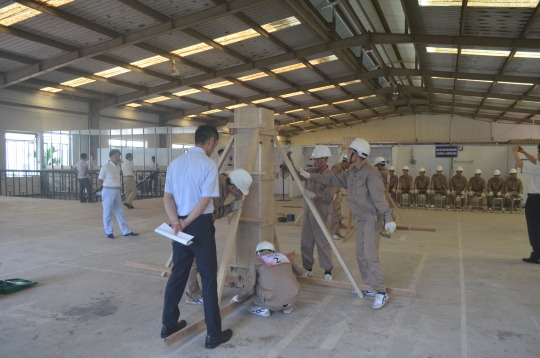
Carpenter’s Skill Test

Trade test Mason
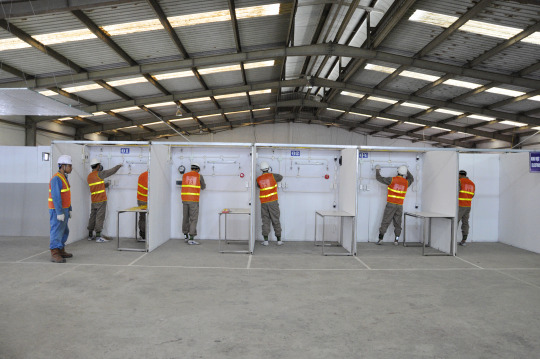
Test your skills of electricians and plumbers

Trade Test Plasterer

Trade Test Painter

Trade Test Scraffold
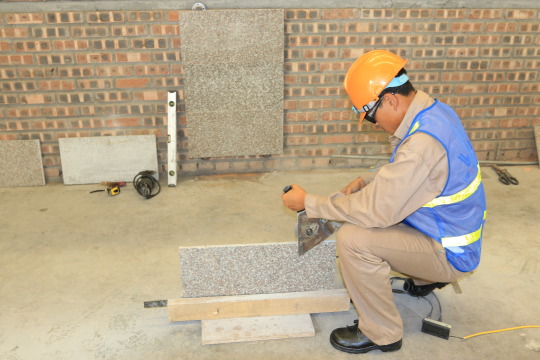
Check the skill of stone tilers

Test the skills of welders working around the world

The employer went to Vietnam to directly test for tailoring skills to get the best labor

The employer goes to Vietnam to directly test for CNC worker skills to get the best job

The employer checks the method of preparing pork by Vietnamese workers

we invite celebrity chefs to teach our candidates
Vietnam Manpower is ready to cooperate with contractors in construction, and ranchers in New Zealand to provide labor working on farms and construction industries in New Zealand factories. The workers we provide have the ability to speak English, are disciplined, and industrious. We supply all the workers in any positions, places from construction sites, and factories to agricultural farms having harvest season in some fruit and vegetable farm in New Zealand. Vietnam Manpower wishes to bring ranchers, contractors, and harvesters with the best workers from Vietnam.
In terms of the construction sector, we have also supplied 3G, and 6G welders; builders, carpenters, reinforcing iron and rebar workers. In other services, we have supplied manicurists, employees working in restaurants, hotels, pipe fitter,s and Structural Steel Construction Workers.
VIETNAM MANPOWER ®, “We bring the right man for the right job”, “Your Trust – Our Mission”. VIETNAM MANPOWER SUPPLIER Mobile: +84982.0303.66 Email : [email protected] Website: vnmanpower.net
facebook.com/Vietnammanpowersupplier1 https://www.linkedin.com/in/vxtgroup-... https://twitter.com/SupplierVietnam/ #vxtgroup #vxtmanpower #vietnamworker #vietnamlabour #vietnammanpowerservice #jobintaiwan #universalmicroelectrnics #vietnameseworker #vietnammanpoweragency #vietnamtaiwan #supplyworkeroverseas #vnmanpower #manpoweromania #manpowerhungary #manpowerpoland #manpower_denmark #manpower_Netherlands #manpower_Ireland #manpower_Icedand #manpower_Finland #manpower_Norway #romanianjobs# #shutteringcarpenter# #concreteworker# #vietnamlabour# #civilconstructionworker# #buildingworker# #vietnameseconstructionworker# #vxtgroup# #vtcmanpower# #vtcmanpowervietnam#
0 notes
Text
Offshore Recruitment agencies make the work go smooth for the offshore industries.
Working on oil rigs in the sea is typical of offshore work. Offshore employees in the oil and gas industry are typically involved in discovering and recovering mineral resources from the seabed. It is possible that the task will be physically taxing and that it will be done under harsh conditions, such as extreme weather. The offshore service and maritime sectors are important economic engines that ensure that our country has enough energy and resources to develop. These industries are made up of a wide fleet of technologically advanced boats that keep the energy industry's heart pumping. The last few years it has been difficult and challenging for the offshore industry due to several factors. There has been a great change in the offshore industry before the Covid-19 times and today. The shortage of manpower has greatly affected the offshore industry. The offshore recruitment agency gives big support to the offshore industries by providing efficient manpower.
There might be many recruitment agencies that would be providing manpower to the offshore industries. The recruitment agencies guide the candidates about the career opportunities that are available in the offshore industry. The offshore industries are vastly increasing day by day with lots of career opportunities and vacancies.
Ajeets is among the top offshore recruitment agency for the last 16 years serving skilled manpower across the globe. Ajeets has always provided skilled labor in abundance whenever it has been required to offshore industries situated globally. Our team of experts guides the interested candidates about the career opportunities in this industry. We recruit for the offshore oil and gas industry and marine offshore industry. The offshore and marine recruitment procedure is a bit difficult nowadays, and it is not a part of mainstream recruitment. However, there are many roles in marine and offshore drilling that candidates are interested in. The money is good, and the positions available in this industry are fascinating. There are many job opportunities on drillships, jack-up rigs, semi-submersible drilling rigs, undersea oil and gas mines, and so on. Most of the time, positions in marine, rigging, drilling, and maintenance are offered on a temporary, permanent, or contractual basis.
AJEETS works with the reputed companies globally that are having best career opportunities. From chief engineers to pipefitters, we hire for a variety of professions like Chief Engineer, Coil Tubing Engineer, Mud Logging Engineer, Drilling Fluids Engineer, Noise and Vibration Control Engineer, Drilling Superintendent, Surveyor, Radio Officer, Security, Paramedic/ Nurse, Safety and Fire Protection Staff, Crane Operator, Drilling Foreman, Chief Mate, Slickline Jobs, Drillers, Rig Electrician, Rig Welder, Rig Mover, Seaman, Oiler, Boat Driver, Derrick Man, Store man, etc. Because these professions require a lot of travel and relocation, we look for applicants who are adaptable to the settings and job requirements of the places they are assigned to. Candidates must pass examinations that have been properly created by our recruitment specialists. Our candidates receive feedback and guidance in order to help them enhance their performance. Our recruitment process also includes basic training. Our documentation procedure is simple and straightforward. Our recruitment team strategizes tailored personnel solutions for your business growth based on your project requirements. Our services also meet market and industrial requirements.
AJEETS provides an abundance of skilled labor to offshore countries. As the premier offshore recruitment agency, AJEETS saves you time, effort, and resources in hiring, training, scheduling, and managing employees. Instead, we'll take care of all the paperwork and processes while you focus on getting more work done. We make sure that the candidate we recruit for your company is that much capable of working and helping your company to become more successful. We have been an experienced staffing agency as we are in this business for several years. Before locating a candidate for the company we make sure that his salary must be negotiated and be made fixed, his documentation, visa processing everything should be well marked. As the leading offshore recruitment agency, we provide human resources from India, Nepal, Bangladesh, Sri Lanka, and the Philippines. Kenya, and Uganda. AJEETS team has recruited skilled, semi-skilled, and unskilled manpower to countries like Qatar, the United Arab Emirates, Kuwait, Saudi Arabia, Bahrain, and Oman in the Middle East; Singapore, Brunei, Malaysia, the Maldives, and China in the Far East; and the United Kingdom, Germany, Poland, Romania, and Serbia in Europe.
0 notes
Text
A Candidate or a Job? AJEETS can help you fulfilling your dream in the offshore industry.
Offshore jobs frequently involve working on offshore oil rigs. Mineral resources are often found and recovered from the seabed by offshore workers in the oil and gas sector. It's probable that the task will need a lot of physical effort and that it will be carried out under challenging circumstances, like inclement weather. The maritime and offshore service industries are significant economic drivers that make sure our nation has enough vitality and resources to advance. These sectors comprise a large fleet of cutting-edge boats that keep the energy sector's heart beating. Due to a number of issues, the offshore sector has faced complex and difficult circumstances during the past few years. Before the Covid era and now, there has been a significant transformation in the offshore industry. The offshore industry has been severely impacted by the labor shortage. The agencies for offshore drilling recruitment in the gulf give ample support to the offshore industries by providing efficient manpower. There may be a large number of recruitment companies supplying labor to the offshore industry. The recruitment firms inform potential employees of the job options in the offshore business. The offshore sectors are rapidly expanding, creating numerous job openings and career opportunities.
AJEETS is among the top agencies in offshore drilling recruitment in the gulf for the last 16 years serving skilled manpower across the globe. Every time competent labor was needed by offshore enterprises located around the world, AJEETS delivered in spades. Interested applicants are guided about employment options in this field by our team of professionals. We hire for both the marine and offshore oil and gas industries. These days, the offshore and marine recruitment process is a little challenging and is not a common practice. Candidates are, moreover, drawn to a variety of positions in marine and offshore drilling. The jobs available in this sector are fascinating, and the pay is good. On drill ships, jack-up rigs, semi-submersible drilling rigs, undersea oil and gas mines, and other similar structures, there are several employment options. Positions in the marine, rigging, drilling, and maintenance industries are typically offered on a temporary, permanent, or contractual basis.
AJEETS as the top agency for offshore drilling recruitment in the gulf works with reputed companies globally that are having best career opportunities. From chief engineers to pipefitters, we hire for a variety of professions like Chief Engineer, Coil Tubing Engineer, Mud Logging Engineer, Drilling Fluids Engineer, Noise and Vibration Control Engineer, Drilling Superintendent, Surveyor, Radio Officer, Security, Paramedic/ Nurse, Safety and Fire Protection Staff, Crane Operator, Drilling Foreman, Chief Mate, Slick line Jobs, Drillers, Rig Electrician, Rig Welder, Rig Mover, Seaman, Oiler, Boat Driver, Derrick Man, Store man, etc.

We search for candidates who can adjust to the environment and job needs of the locations they are assigned to because these careers involve a lot of travel and relocation. Exams that have been appropriately developed by our recruitment professionals must be passed by candidates. In order to improve their performance, our candidates get advice and criticism. Basic training is also a part of our hiring procedure. Our documentation process is easy to understand. Based on the demands of your project, our recruitment team develops customized personnel solutions for the expansion of your firm. Additionally, our services satisfy commercial and industrial standards.
A lot of trained labor is made available to offshore nations by AJEETS. With AJEETS, the top firm in offshore drilling recruitment in the Gulf, our experts hire, train, schedule, and manage people with less time, effort, and expense. Instead, we'll handle all the paperwork and procedures so you can concentrate on finishing more work. We make sure that the person we hire for your organization is capable of working and assisting in the growth of your business. Given that we have been in this industry for a while, we are a seasoned recruiting firm. Before finding a candidate for the position, we make absolutely sure that his wage must be discussed and established, his papers, and the execution of his passport, among other things, are all in order. As the top agency in offshore drilling recruitment in the gulf, our experts chose the best manpower whether skilled or unskilled from India, Nepal, Bangladesh, Sri Lanka, the Philippines, Kenya, and Uganda. AJEETS has the best team in its group who help you to reach your goal as a candidate and an employer. We recruit candidates in the gulf countries such as Qatar, the United Arab Emirates, Kuwait, Saudi Arabia, Bahrain, and Oman. If you have any doubts or any queries you can reach us any moment.
0 notes
Text
Textile Market - Forecast (2022 - 2027)
Textile Market size is forecast to reach US$374.1 billion by 2026, after growing at a CAGR 4.2% during 2021-2026. Globally, the rising demand for apparel from the fashion sector, as well as the rise of e-commerce platforms is expected to drive the textile market growth. Growing customer demand for environmentally friendly products is prompting large textile companies to restructure their businesses and invest in environmentally friendly manufacturing processes. Currently, the textile industry has particularly focused on using technologically advanced enzymatic desizing for removing and is accepted as standard by the textile processing industry, leading to growth in the segment. Additionally, in future, the rising demand for special property fabrics in textiles in developed economies is expected to provide opportunities for the market growth.
Impact of Covid-19
The demand for textile products abroad and domestic sales gradually declined to a grinding halt due to the panic situation created by the COVID-19 outbreak. Due to the lockdown, all sorts of textile-related factories were shut down. Also, cash crunch, supply chain disturbance, and manpower-related issues affected the market for textiles. The fashion industry was facing calls to step in and protect the wages of over 40 million garment workers in their supply chains around the world who faced destitution as factories closed and orders dried up in the wake of the Covid-19 epidemic. Due to COVID-19 pandemic, the textile industry of various developing countries had experienced huge loss, which reduced demand of fabrics, and thus affected the growth of the market till the second quarter of 2021.
Request Sample
Report Coverage
The report “Textile Market – Forecast (2021-2026)”,by IndustryARC, covers an in-depth analysis of the following segments of the textile market.
By Fiber Type: Natural Fibers (Animal-based Fibers and Plant-based Fibers) and Synthetic Fibers (Kevlar, Nomex, Nylon, Polyester, Spandex, Rayon, Acrylic, and Others)
By Application: Household, Technical, Fashion & Clothing, Others
By Geography: North America (USA, Canada, and Mexico), Europe (UK, Germany, France, Italy, Netherlands, Spain, Russia, Belgium, and Rest of Europe), Asia Pacific (China, Japan, India, South Korea, Australia and New Zealand, and Rest of APAC), South America (Brazil, Argentina, Colombia, and Rest of South America), and RoW (Middle East and Africa)
Key Takeaways
Asia-Pacific region dominated the textile market owing to the rising market growth of domestic textiles and apparel and increasing government investments in the textile industry.
Rising demand for synthetic textiles owing to its advantageous properties over natural textiles in household, technical, fashion & clothing and other applications is estimated to drive the growth of the textile industry.
Strict government regulations and rising raw material prices are challenging the growth of the textile market.
Also, U.S. and China tariff war will affect the textile and apparel industry, including manufacturing and trade activities will affect the growth of the sector.
Inquiry Before Buying
Textile Market Segment Analysis -By Fiber Type
Synthetic fiber held the largest share in the textile market in 2020. Synthetic fibers are made from chemicals that are superior to natural fibers, such as cotton or silk. Synthetic textiles are made from either inorganic products or a mixture of organic products and chemicals. Some are found to be deeply strong and durable, while others dry much faster than others, or may be more absorbent and easier to dye. Synthetic fibers are man-made fibers, most of which are made from petroleum raw materials called petrochemicals. All fabrics are produced from fibers, while the fibers are produced from artificial or man-made sources. Thus, with the growing demand for synthetic fiber it is estimated that market for textiles would also rise.
Textile Market Segment Analysis -By Application
Fashion and Clothing held the largest share with 40% in the textile market in 2020 and is anticipated to grow at a CAGR of 4.6% during the forecast period 2021-2026. Rising usage of textile and increasing government investment in the fashion and clothing sector is driving the growth of the market. According to Invest-India, the domestic textiles and apparel industry amounted to $140 billion in 2018 (including handicrafts) of which $100 billion was consumed domestically, while the remaining $40 billion was exported to the world market. Moreover, the growing demand for luxury products has driven the market for high-end designer bags all over the world. Industry producers are also expanding the product portfolio by introducing innovative quality products in different varieties to meet the needs of consumers. Rising revenues, along with increasing brand awareness in developing countries, have significantly boosted textile industry growth. Thus, the increasing usage of textile for fashion and clothing application is estimated to drive the market growth in the forecast period.
Schedule a Call
Textile Market Segment Analysis – By Geography
Asia Pacific dominated textile market in terms of revenue with a share of 36% in 2020 and is projected to dominate the market during the forecast period (2021-2026).Increasing production of textiles in emerging economies such as China, Japan, India, and South Korea is estimated to drive the market growth. For instance, According to the India Brand Equity Foundation, the Indian textile industry contributed 13 % of industry output to the FY20. It contributed 2.3 % to India's GDP and employed more than 45 million people in the FY20. The sector contributed 12% of India's export earnings to the FY20. The domestic textiles and apparel market in FY19 amounted to an estimated US$ 100 billion. Also, the production of raw cotton in India has reached 36.04 million bales in FY20. In FY19, fiber production in India stood at 1.44 million tons (MT) and reached 1.60 MT in FY20 (until January 2020), while in yarn production stood at 4.762 million kg during the same period. Thus, with the growing demand for textile from various end use industries in this region will further drive the market growth in the forecast period.
Textile Market Driver
The growing demand for special property fabrics in textiles tends to increase the growth of the market
Due to its hydrophobic, high temperature resistant, lightweight & durable, air permeability, good tensile strength, and zero toxicity, the demand of textiles tends to increase. The hydrophobic feature of special fabrics implies its waterproof property, doesn’t just mean that it is purely water repellent, but that it actually helps to maintain the quality of fabrics even if the water gets inside. It also has high temperature resistant property, which means the melting point of PET/polyester spunbond fabric is around 260℃ which is dimensional stability in the high temperature conditions. It is widely and largely to be used for various bags printing. Owing to such unique properties, the demand of special fabrics tends to increase in textile industry, which leads to increase in the growth of the market.
Technical Textiles segment to boost the long-term Textiles Industry Growth
The technical textiles industry has immense potential in the developing countries. Asia is now emerging as a powerhouse of both production as well as end-use consumption of technical textiles. In technical textiles, high tech functional finishes are utilized to make them functionally superior and relevant to the end use application such as anti-bacterial, anti-static, UV protective, thermal, or biodegradable functions which are playing an increasingly important role. The coatings used in technical textiles are all thermoplastic polymers such as Polyvinyl Chloride (PVC), Polyvinylidene Chloride (PVDC), Polytetrafluoroethylene (PTFE), and others. Globally, technical textiles account for more than one third of all textile consumption. Currently, India accounts for only 8.6% of global technical textiles consumption. Thus, the increase in demand of technical textile will increase the production rate which will parallelly upsurge the textile industry growth globally.
Textile Market Challenges
Rise in Raw Material Price
Polyester fiber is made by combining ethylene glycol and dimethyl terephthalate in a high-heat reaction. The product of this reaction is a monomer, which is subsequently reacted with dimethyl terephthalate to form a polymer. Majorly, the price of crude oil is increasing drastically, and due to this, the production of polyester tends to be expensive as compared to other raw materials, which constraints the growth of the market. In addition, due to environmental regulations, the production of man-made raw materials is getting reduced and the demand of its alternative, which is natural fibers, is getting increased. This factor is also tending to constraints the growth of the market and can be seen its effect in futuristic market period.
Buy Now
Textile Market Landscape
Technology launches, acquisitions, and R&D activities are key strategies adopted by players in the textile market. Major players in the textile market are Lenzing, Aditya Birla Group, Sanyou Chemical Industries Co., Sateri, Fulida Group, Aoyang Technology Co. Ltd., Shandong Yamei, Asahi-Kasei, Indorama, Mitsubishi Rayon Co., Ltd, Toray Industries, DuPont, and Others.
Acquisition/Product Launches
In June 2019, IntexarTM, a revolutionary version of printable electronic ink, was introduced by Dupont. IntexarTM enables the incorporation of circuits into fabric that can fold, fit, stretch, and even survive laundering.
For more Chemicals and Materials related reports, please click here
#Textile Market Share#Textile Market Size#Textile Market Forecast#Textile Market Growth#Textile Market
0 notes
Text
If Putin is not invading Ukraine then there are some real chance of Russia and CCP China wage wars against each other for the resources and political domination of the Middle Asia Steppe, assuming USA and Western democracies are not stepped in for intervention and peacekeeping. Ukraine as the shining example of One Belt One Road initialitive is now demoliting by Russia weapons day and night and one wonder what is the benefits of joining one Belt one road, and the influence and trust of CCP China are thus reduced in the Middle Asia Steppe nations. It may sounds ridiculous now but I did entertained that an enlightened China would send its army to protect Ukraine against Russian invasion which is to showcase how trustworthy is for other nations to form military and economic alliance with China. That is a way to win souls and hearts when a nation honor its agreement and deploy its army to protect its friendly nation from harm. That would have the effect of strengthening the role of China over there, and this assurance could acted as a great deterrence against Russian invasion of Ukraine. After all, CCP China gained nothing in the Russia invasion of Ukraine and lose the opportunities of trade with Ukraine then expanding its economic and political influence over there. Thus, strangely Putin had help USA and Western Europe to stop the expansion of quasi-Red China expansion to the Middle Asia Steppe and it messed up Xi's great plan to become a quasi region leader there. I saw a great chance of he starting a war against Taiwan when the war between Russia and Ukraine is not favorable for the economic development utilizing the resources and manpower there, and it's being forced to absorb all the debts creating by this war which is adding insult to the injury done by COVID induced economic recession. He could use similar argument of how Russia try to reunited with its the finding place of Russian culture. There are critical technologies in Taiwan that would greatly benefit the development of IT industry in CCP China, and Xi shared the same concerns as Putin: If Ukraine is allowed to develop democratically and freely to become a prosperous Salvic nation then Chinese would began to ask why Taiwan can't follow the same model as Ukraine to be a better China. For all the cards CCP China can play, it had only the nationalistic and patriotic sentiment to rely on, and if nationalistic and patriotic sentiment didn't express itself as a reunification war then it is going to hitting hard on the face of CCP. Now when US is devoting a lot of resources against Russian invasion of Ukraine, it followed that is the best chance to do that and get favorable outcome. It is now or never for CCP China for it had forgo the chance of defending Ukraine against Russian invasion.
0 notes
Text
THE CRITICAL SIGNIFICANCE OF ERP IN PROJECT MANAGEMENT
The interconnectedness, complexity, and collaborative nature of the construction industry’s supply chains and workforce affect the cost and schedule of infrastructure projects. The Covid-19 crisis has got amplified, as the industry faces disruption from every possible angle. Demand is considerably less, supply chains have been disrupted and there are huge operational restrictions. Supply chain interruptions such as restrictions on the movement of the material and manpower will likely continue, affecting the availability of parts and equipment, and eventually impact project financials and even the viability of the project.
In this kind of scenario, an ERP solution can help in automating the business processes such as supply chain, contracting, and financial management processes. An ERP software can also help in ensuring adherence to internal controls, gaining real-time visibility into operations through better reporting, and saving money through better use of technology.
Some of the key benefits that ERP automation can provide businesses in the context of the Covid 19 pandemic include:
#1 Meet Compliance Standards
ERP solutions allow companies to meet industry best practices — such as single sign-on and two-factor authentication — and remain compliant with General Data Protection Regulations (GDPR), Financial Conduct Authority (FCA), and data security standards. These verifications are increasingly important because fraud and cyberattacks typically increase during times of economic uncertainty.
#2 Consolidate IT Systems & Processes
ERP can help in consolidating the number of systems IT needs to support and establish up-to-the-minute reporting, even while employees work from many different locations, helping IT support ensures users can work effectively.
This will allow employees to spend more time on their specific roles and tasks; and less time navigating separate software systems for operations, accounting, and customer relationships because they’re all combined into a single platform. Ultimately, a reduction in the needed systems and the automation of key processes into a single system can lead to reductions in operational errors and inefficiencies that cause issues including workflow bottlenecks, employee productivity barriers, and customer service breakdowns
#4 Access Intelligent Financial Data in Real-Time
Through leveraging the automation possible in ERP systems, companies can gain clear, relevant, real-time access to metrics and reports that are key to your organization. A modern ERP platform’s reporting and dashboards allow multiple users to review their financial data continuously through:
• A single shared database
• Role-specific real-time reports
• insight into key performance indicators (KPIs)
• Ability to view summary information and drill down to transaction-level data in a few clicks
These capabilities allow teams to reduce the amount of time spent preparing and auditing data, while helping them access accurate analytical reports, forecast financial health, identify trends, and make informed decisions more cost-effectively. This is especially important for companies that are adjusting to new working structures, such as a new remote working environment, or operating with fewer personnel.
#5 Project schedule management
In the face of Covid-19’s impact on capital projects and construction programs, here are important actions that owners, contractors, subcontractors, and suppliers can take to improve control of their construction programs and be better positioned when the pandemic subsides.
A project management solution can ensure the following key benefits:
(a) Project Planning and Management: Currently, there are varying guidelines, orders, and self-imposed restrictions on the planning, design, and management of some construction projects. The project management system will ensure the following benefits:
Proactive development of a mitigation plan for potential slowdowns, shutdowns, and project restarts
Review projects to identify what work may need to be mothballed and how to strategically do so
Assess what services can be continued off-site to limit schedule delays
Focus on design and shoring up contracts to limit risks associated with uncertain schedules and be positioned for efficient remobilization once restrictions are eased
Develop project startup plan before slow or shut down, documenting work that has been completed and remains to be completed. The startup plan will carry forward the project strategy and serve as the basis for planning the rest of the project when the project restarts
(b) Resource Planning: The solution will allow the organization to:
Revisit resource plans across project stakeholders (owner, project manager, architect, engineer, contractor, a subcontractor) and identify current key resources as well as those required for the duration of the project — through planning, design, and management.
Obtain updated project organizational charts and track work situations of resources on a regular basis. Increased absenteeism of resources due to sickness, the need to care for others, or restrictions on travel may impact project efficiency. Understand resourcing trends on a real-time basis to be able to forecast changes to productivity compared to the plan.
Retain records of the resource plan updates for the duration of the project. Prepare for efficiency impacts if stakeholders have to bring in new crews or personnel to backfill or to restart work after a shutdown.
© Job site: The project management will allow the organization:
To revisit job site rules to understand changes that need to be implemented in response to COVID-19 guidance
Assess the cost impacts of enhanced cleaning, reduced workforce, and other modifications. Understand the potential new liabilities presented by an active job site in the midst of the pandemic
(d) Risk Analysis By using the project management system the organization can:
Refresh project risk registers
Consider different scenarios for how projects may play out across planning, design, and management.
Include market factors such as disruptions to the supply chain; potential insolvency and bankruptcy of suppliers, vendors, subcontractors, and contractors; and delays in obtaining permits.
Assess the costs and benefits of project shutdowns versus slowdowns.
Prioritize responses and mitigation activities based on the probability and impact of risks manifesting themselves.
Revisit risk registers regularly and consider potential risks and mitigation steps broadly.
As one can see, using a robust ERP solution can help construction firms improve quality, expedite delivery, minimize losses, keep people safe, and increase the bottom line.
Highbar Technocrat is one of the leading end-to-end IT solution providers for the Infrastructure, EC&O, Real Estate, and Power sectors. They are SAP Gold partner and offer a wide bouquet of digitally integrated solutions ranging from implementing SAP-based ERP solutions like Rise with S/4HANA, Cloud-based solutions to 5D BIM for mega infra-projects, RPA & IoT solutions, and many more. With an in-depth understanding and core competence of the construction & infrastructure industry, Highbar is the perfect blend of domain knowledge in the infrastructure business with a team that is well equipped to understand and relate to the requirements of the sector.
To know more write us at [email protected] or call +91 89767 11399
#sap#highbar technocrat#technology#sap erp#sap s/4hana#construction#IT#information technology#it software#project management#infrastructure#real estate#digital transformation#business transformation
0 notes
Link
Protect and appreciate your employees as you use manpower to achieve efficient and productive operations for restart and recovery of your business. Support and empower your people to create a successful and versatile business. Previous working habits require an overhaul to prevent the spread of COVID-19
#Manpower Guidance Fact Sheet#Protect Manpower from COVID#Ensuring Safety of Employee#Manage Labor Planning in Covid-19
0 notes
Link
0 notes
Text
Americas Wall Covering Forecast to 2031 with Key Companies Profile, Supply, Demand and SWOT Analysis
According to a new report published by Allied Market Research, titled, “Americas Wall Coverings Market by Product Type, Application, End user, and Region: Opportunity Analysis and Industry Forecast, 2022–2031,” The Americas wall coverings market size was valued at $67,034.4 million in 2021 and is projected to reach $1,04,199.0 million by 2031, registering a CAGR of 4.6% from 2022 to 2031.
Wall coverings is used in residential and commercial sector to enhance the interior and exterior walls and to protect the wall surface from stains and moisture. Numerous varieties of wall coverings are available in the market, some for extremely particular and various uses. Wall coverings products include wallpaper, wall-panel, and tiles, which are used in different applications such as kitchens, bathrooms, and interior & exterior walls.
The Americas wall coverings market has grown due to expansion of the residential construction and renovation sector in North America and Latin America regions. Rise in demand for wallpaper and tile wall coverings in the residential construction sector for the purpose of protecting walls have enhanced the look & style of exterior walls, which has propelled the market forward. The governments of various countries have invested in residential sector due to rise in population and for better living standards. For instance, since April 2021, the U.S. government has invested $213 billion to construct and retrofit more than 1 million residential and commercial buildings. It includes construction of 500,000 homes for low and middle-income homebuyers. In addition, the U.S. government is expected to spend $137 billion on the upgrade of schools and universities. Hence, due to rise in population, these investments in construction sector are anticipated to increase the utilization of wall coverings and hence are anticipated to drive the market growth.

North America dominated the market in terms of revenue in 2021, due to growth in the residential sector owing to rise in population and income level. Furthermore, increase in renovation activities in developing countries, as well as rise in building construction are expected to provide a wide range of opportunities for wallpaper and tile wall coverings to be used for bathroom walls, kitchen walls, and exterior & interior spaces, boosting the North America wall coverings market.
However, during the COVID-19 pandemic, various manufacturers in the Americas wall coverings market had to stop their business in countries such as, the U.S., and Canada. This break directly impacted the sales of Americas wall coverings companies. In addition, lack of manpower and raw materials constricted supply of wall coverings products, which negatively influenced the growth of the market. However, reopening of production facilities and introduction of vaccines for coronavirus disease are anticipated to lead to re-opening of Americas wall coverings companies.
Full Report With TOC:-https://www.alliedmarketresearch.com/press-release/americas-wall-coverings-market.html
0 notes
Link
In 2020 Singapore was hit by a series of coronavirus outbreaks, centred around dormitories where thousands of migrant workers live. Cases have dropped significantly, but most of the men are still not permitted to leave except to go to work. It is one of the longest periods of Covid confinement faced by anyone anywhere in the world.
"This is prison life. This is a captive's life."
Sharif came to Singapore in 2008. At the time, his wife was pregnant and the book stall he ran in Bangladesh was shut down.
Over the past 13 years he made a life for himself here, but since early 2020 all he has known are the four walls of his dormitory and the construction site where he works.
He and nearly 300,000 others are banned from mixing with the general public. Last week, Singapore's government said it would allow a handful of workers to go out in a "pilot scheme".
"I appreciate the experiment," he says. "But I can't express much joy at this news. Workers are only allowed to go to a certain place for a fixed time."
Sharif was not one of those selected for the scheme. Sitting on the back of the lorry that takes him to work, he often catches glimpses of the city and its people, who have never been subject to the same restrictions.
"When I see everybody outside, looking happy, it's very painful for me," he told the BBC on a video call.
"They are eating out, going shopping, meeting their friends. And I think, 'why is that not me? Did I make this coronavirus?'"
Most of his spare time he spends lying on the top bunk of his bed, either talking to his family or writing prose and poetry - both in English and Bengali.
He says night time is when things are most difficult. Men often wander the corridors or try to sleep outside on the ground.
"I lie in my bed and sleep won't come. How can I sleep? I need fresh light, I need fresh oxygen," he says.
'Are we animals?'
On the first day of the pilot scheme, the BBC was invited to Singapore's Little India neighbourhood.
Fifty workers were allowed to spend four hours out of their dormitories unsupervised.
A spokesman for the Ministry of Manpower (MOM) called it a "milestone".
At one of Singapore's main Hindu temples, two men were presented to journalists.
One of them, Packrisamy Muruganantham from India, told those assembled that he was "very happy to be out" and "very grateful to the Singapore government and to the MOM for taking care of us".
Since the start of the pandemic, Singapore has reported 58 deaths out of a population of 5.7 million.
The country's success in suppressing the virus has afforded Singaporeans long periods of freedom over the past year and a half.
But even when restrictions were at their toughest and the country was locked down, no healthy person in Singapore was ever banned from leaving their home.
Socially-distanced exercise, for example, was encouraged. But not for those in the dormitories.
"The communal living and working conditions of migrant workers in dorms put them at higher risk of infection and the formation of large clusters," Singapore's Manpower Minister Dr Tan See Leng said in February.
Dr Tan declined an interview with the BBC, but in a statement a Ministry of Manpower (MOM) spokesperson said the policy of keeping workers in their dormitories was "to protect the health of our migrant workers and to mitigate the risk of further transmission".
For Sharif, it feels more like he is being punished rather than protected.
"Everybody in the community is allowed out. All these people are expected to follow the social distancing rules, but they think we cannot do this also," he says.
"When I see a law only for migrant workers I think, 'Are we not human? Or are we animals? Do we not understand anything? Are we so uneducated?'"
A wake-up call
The men in the dormitories - mostly from South Asian countries - do vital manual work here.
They build the country's roads, bridges and apartments. In return, they are able to send back good money to their families.
Tasrif - also from Bangladesh - arrived in 2017. He is 25, earns less than $750 (S$1000; £400) a month and maintains air conditioning units.
He spent around $7,500 in agency fees to come to Singapore.
"We are working tirelessly for the country," he says. "We're making everything, we're doing everything for you guys."
"We are human beings just like you, like everyone in the community. We want our dignity back."
But life in the dormitory typically means sharing a room with up to 30 people and dividing your bathroom, cooking and recreational space with hundreds more.
These conditions led to major Covid-19 outbreaks in dormitories back in March 2020. Big clusters meant Singapore went from being almost untouched by the virus to announcing an island-wide shutdown for two months.
It prompted Tommy Koh, a former Singaporean ambassador to the UN, to rebuke the government recently.
"We should use this as a wake up call," said Mr Koh. "To treat our indispensable foreign workers like a first world country should and not in the disgraceful way in which they are treated now."
But Singapore's government has always been open about separating dormitory residents from everyone else in the country.
They hold a different visa, work under different labour laws and the authorities do not pretend that these men have the same rights as other foreigners who do the white collar jobs in the city.
Even official daily case numbers for Covid-19 are split into three categories: "Imported", "Dormitory residents" and "Community".
"Community" means everyone, apart from those living in a dormitory.
The figures are stark. As of 16 September, migrant workers accounted for 74% of all recorded cases. For context, the workers make up just 5% of Singapore's total population.
Last year several media outlets reported on a spate of suicides and attempted suicides in the dormitories.
When asked by the BBC about the current situation, the MOM declined to provide any details.
Instead, they said they were "always mindful and conscious of the need to better support the mental wellbeing of our migrant workers" and that they offer counselling services and a helpline for those who need it.
Professor Jeremy Lim, director of global health at the Saw Swee Hock School of Public Health at the National University of Singapore, says denying workers their freedom has few public health benefits at the moment.
"I would say that the Covid-19 concerns are massively overblown.
"They are vaccinated, they are familiar with safe distancing, they wear masks. So what more can we do?
"Speaking as a public health professional, we have to recognise there are limits. Right now is the time to focus on these workers' mental health because they are really, really struggling at the moment."
51 notes
·
View notes
Text
No “wine-ing”: a season of ice and fire
A lot of you dropped very kind messages about my well being and I’m happy to say that my recovery from Covid is firmly on track and I’m close to full strength again. My exhaustion and tiredness has thankfully been ebbing away. I’m back running my daily 5 km before I start my work day and cycling to get back to full fitness.
So I managed to escape Paris before the travel lockdown and curfew was imposed before April 26. I’m a country girl at heart and I’ve always felt a little uncomfortable in big cities. I love Paris but I also get tired of it quite easily. So I headed to the chateau vineyard where I thought I could complete my recovery from my Covid illness and work remotely (the work never stops) without too many distractions.
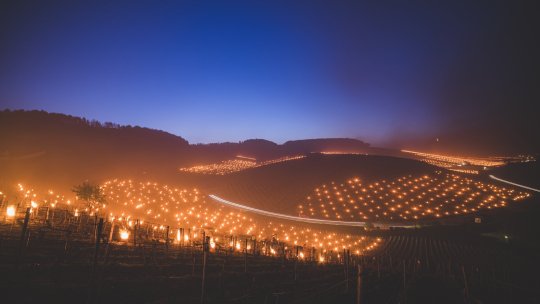
Unfortunately - or fortunately as I prefer to see it - I was mud deep in trying to rescue our wine harvest for 2021 as frost struck over a few nights that left us reeling, and left much of the country’s wine growing region devastated. No region of France was spared as French wine producers fought valiantly over several nights to stop the frost from letting the buds finally come out to sprout. Wine makers fought with everything they could think of, and in the end resorted to fire to keep the temperature warm enough for the vines to survive the cold snap. It was a spectacular sight all across the horizons of many French wine growing regions including ours.
I’m just thankful to be there at the right place and the right time to help out.

I enjoy coming down to our chateau vineyard as it’s a welcome contrast to the busy city life of Paris. I just couldn’t wait to get dressed up (or dress down?) in tatty old clothing, rolling up my sleeves, and getting my hands dirty with any physical chores to do around the vineyard. I always have this urge to make myself useful instead being stuck behind a desk, bored to death in Zoom call meetings. I was looking forward to running and cycling in the open country air to bust a gut or two.
Mostly though I was looking forward to enjoying home cooked country food, be in the fun company of my two Anglo-Norwegian cousins and their French families, and together we’d be preening over the first shoots of the forthcoming wine harvest for 2021.

It is always an emotional moment at this time of year when we see in the vineyards the glistening tears of the vines (‘les pleurs’) that tell us that the new vintage is underway. As the temperatures rise so does the sap in the vines and where the pruners have trimmed the end of the branch, we see this beautiful sight that reassures us – telling us whatever happens, nature continues. The baby buds are beginning to come out timidly but soon the stark branches of the vines will be green again as these fragile leaves unfurl in the spring sunlight.
Back in 2020 many vintners (winemakers), not just in our region but across the whole of France, were unsure what 2021 would bring. Would 2021 be a challenging vintage or an easy one full of sunshine? With the growing season starting so early, the first hurdle - and one of the most crucial - is the fear of late frost. It seems to be more and more of a problem in recent years, this late frost burying any new growth like a fast moving avalanche. For many vintners they have 2017 written into their hearts in painful tears when frost devastated any hope for a healthy harvest and for some even brought financial ruin.
For me - at the time - it was a rude introduction to the vicissitudes of the wine making business by two wine loving cousins co-owning and co-managing an old family owned French vineyard. Family fortunes rise and fall according to the harvest. All the blood, tears, and sweat poured into running an efficient high yielding grape vineyard comes to naught when you realise that you are not the master, nature is.

The risk of frost has increased in recent years due to global warming, which does not just warm but makes the climate more erratic and temperatures more extreme. Good news for the moderately temperate climate for our wine making region where hotter drier summers have produced a string of good recent vintages (2015, 2016, 2018, 2020). But the negative side of this is that frosts have become more common right up until the end of the usual cycle – last year it was on 6th May.
Except this year, 2021, now looked like 2017 because of the devastation of continued frost on the vines. In talking to the French family of my cousin’s French wife, who have faithfully made wine for a few generations they ruefully pointed out past bad frosts. Apparently 1956 was legendary with a very cold winter frost some minus 20 °C following a warm period when the sap rose from the roots into the vine foot and branches. It killed the vines. The last disastrous late spring frost before 2017 was 1991. It seems to be striking significantly every two years now and a every year to a degree. Who would have expected the devastation again this year, 2021 some forty years on.
This year, particularly around April 7th and 8th, brought despair to vignerons right across France from Champagne to Cognac, Burgundy to Bordeaux as thousands of vineyards’ new growth was obliterated by frost (resulting in zero yield for harvest 2021). There may be some new growth and some secondary budding but this is a repeat of 2017 (if not worse) and few were able to harvest any grapes worth speaking of.
My cousins had been in contact with friends and other peers who are wine makers in other regions (friendships are built at trade shows overseas and other association events) and in totality the picture appeared bleaker than previous years. The scourge of frost had been catastrophic. Around half of the vines in Burgundy have been damaged, according to local producers. Some vineyard owning friends in the Inter Rhône region told us that the whole of the Rhône has been hit dramatically and that some plots are affected 100%.
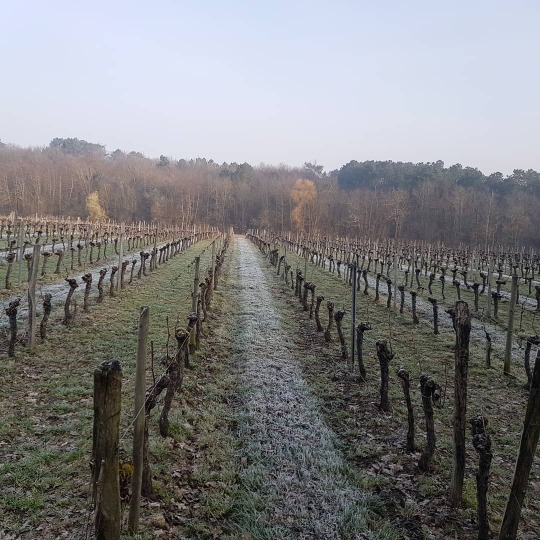
According to the CNIV, the official French council for wine appellation, the frost has affected 80% of French vineyards. We already know that we will have a very low harvest in 2021. Nearly all French wine growers have just suffered a dark week in April.
It’s not just wine growers but fruit farmers too. It’s been like winter coming in spring. Below-freezing temperatures in the Drome and Ardèche regions of central southern France have led to fruit farmers losing up to 90 percent of their kiwi, apricot, apple, and peach harvest. Even in Bordeaux the severity of the frost damaged the growth on fruit trees such as apricots, peaches and nectarines, and field-crops such as rapeseed and sugar beet.
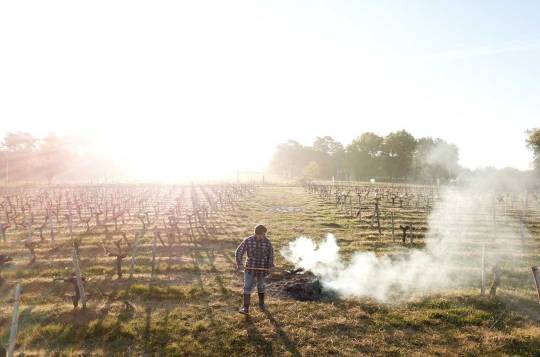
Desperate times call for desperate measures. How does one protect the vines from frost?
There have been a variety of ways vineyard owners have been dealing with the problem of frost. There’s no one size fits all and the solutions are often handicapped by the size of one’s vineyards, financial resources, and manpower.
Two solutions in fighting frost have been aeolian wind turbines and air fans. It takes the warmer air from higher up, and pushes it to the ground. These machines can raise temperatures by up to 2C. The problem is that some of these wind turbines and air fans are permanently set so they can only be set in one direction whilst others one can wheel around to move the air and stop frost settling. Both are very expensive solutions and the cost may outweigh the gain.
Air heaters are another solution. No less expensive though. One of our vineyard owning neighbours wanted to use paraffin fuelled heaters. But he said he would have needed 4,500 paraffin-fuelled heaters to cover all his 15 hectares at a cost of nearly €50,000 for the two worst nights, and even then growers it would protect only the vines for his finest wines.
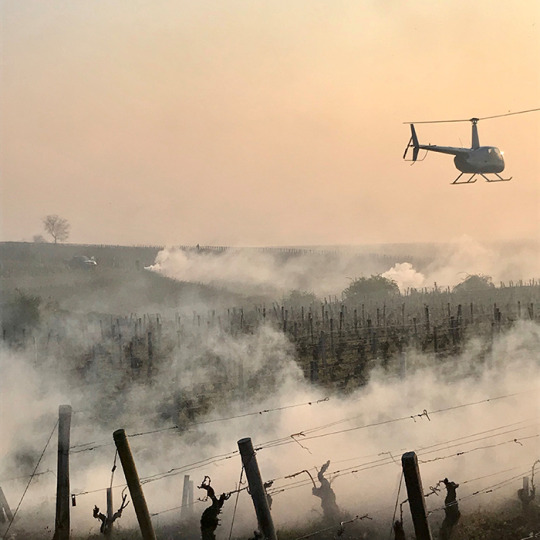
Some of the vineyards also launched helicopters to fly above their vineyards, a method that can help to prevent frost by encouraging warm air to circulate. In effect they push the cold air around so that it does not sink down to the ground causing its damage. I was all for this solution as I’m an ex-army helicopter combat pilot and so I felt my old training could be put to use in civilian helicopters. But we ruled this out once we did the maths. At about 1600€-2000€ per hour one can only fly from 6am but this is the coldest time when the sun comes up. At best the helicopter’s range of effectiveness was a mere 10 hectares. So you don’t get more bang for your buck. But that didn’t stop some vineyards that we knew doing exactly that. These were corporate owned vineyards who tend to be well heeled and can afford to spare no expense.
There are less expensive solutions but are more costly in terms of manpower.
Some vineyards used water sprinklers, allowing a fine coating hitting sub-zero temperatures as the ice acts like a mini-igloo and protect it from outside colder temperatures.
Conversely, vineyard owners hit upon another relatively low cost solution of using candles. They usually last 12 hours and so in effect can be used for the two crucial nights of severe frost. We calculated that at 10€ a candle you would need 300 for one hectare alone. Of course the chief problem is that they need to be lit by hand and hope the wind was kind.
For the biodynamic wine producers they fell back on organic solutions. They sprayed their vines with a spray composed of pectins from apples which is supposed to lower the temperature around the vines. More common and perhaps more effective was spraying vines with Valerian to give the vines some added fortification to survive themselves.

By far the most common response by vineyard owners to combat the frost was to burn fires by burning hay bales amongst the vines. The smoke causes a blanket which heats up the atmosphere. In the old days I was told they actually burned rubber tyres! For it to have any chance of being effective you have to be aware of wine direction and make sure the bales are in the right places. It also helps if your neighbours do the same.
Speaking for our chateau vineyard, we had to make tough decisions to see how our chateau vineyard could combat the frost and minimise the damage to the future harvest. Although I own a small financial investment stake in the vineyard I have always deferred to my two cousins who actually run the vineyard with their married partners on a day to day basis. It’s their life long passion and I’m happy to play a small part in getting my hands (literally) dirty in building something from the soil up and for purely selfish reasons, just love being so close to nature itself. The fact that the French family of one my cousin’s wife - they actually owned the land and were reputable wine makers for generations - added invaluable weight to the wisdom of any decision making we had to do.
We sat around the kitchen table and talked through our options whilst nursing a glass of wine from a past vintage. My cousins and their kids especially thought I was a weirdo - they’re probably right! It’s not that I enjoy it (the mud, sweat and lack of sleep etc) but it was the challenge that really got me energised. If it’s a forlorn battle against the odds that’s when I really come alive. So I was quite jolly and full of vim whilst those around me were bleary eyed and groaning for bed and a hot shower as we were out in the fields in the dead of night. We ran it like a military operation - thanks to me ha! - I put everyone on detail and even the small kids saluted and got to work on their task. We made sure we had hot soup and beers constantly on tap for our staff and workers to take a food break and take a breather. Not that they needed motivating. Every one of our staff and also volunteers worked bravely to limit the damage.
So in the end we fell upon a series of actions which indeed many of our immediate wine making neighbours also followed suit. We sprayed, we watered, we burned. We tried everything to save our vines from further damage from frost.
We concocted an organic solution that had thyme, oregano, and wild sariette to which we added valerian and meadowsweet and a dash of yarrow and horsetail as well as honey; all of which help the whole organic solution to work. In effect this helps the vine to prepare for ice, by changing the composition of the sap a little, by enriching it with sugar. The infusion is then sprayed onto the vines at least 24 hours before the first freeze is forecast. The solution only works if the temperatures stay just below freezing but no lower, at around -2C or -1C maximum. With this solution on the plants, we could increase temperatures by 1-2 degrees. If it drops even lower, to around -5C, as we had in 2019, it’s not enough. It might save some plants, but not all.
We soon followed with watering the vines using our irrigation system we had on hand. It was labouriously time consuming.
When it was clear that this wasn’t going to work out because of the severe temperature drop we fell on fire as the saving solution.
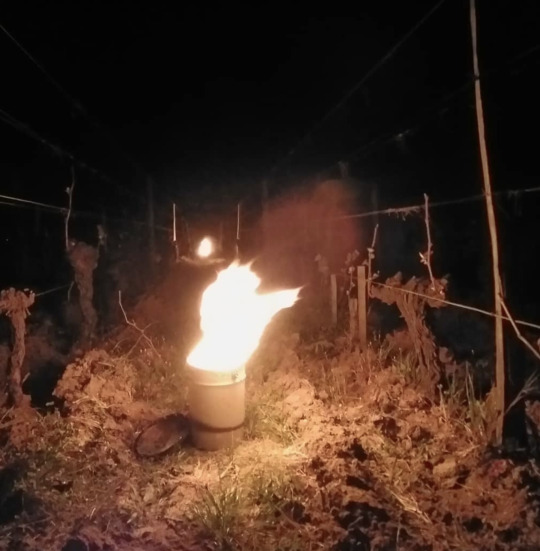
It was all hands on deck as we also roped in some volunteers to help us start small controlled fires amongst our vines. We burned straw bales and piles of wood in very large jerry cans to save what we could. The aim was to create a blanket of smoke so that when the sun came up it didn't burn the vines because of the humidity. One vineyard neighbour of ours actually used a flame thrower and lit more than 700 small fires but had to start all over again because the fires didn’t last one night.
This was our experience too. We had a lot of hectares to cover and so little man power and so we just worked around the clock until we were able to light fires and keep an eye on them should they go out. We ran between the selected vines to make sure the fires remained lit throughout the night starting around 2am to 6am. I don’t think any of us had more than a few hours sleep over a crucial 48 hour window. We took turns to cook for everyone and made sure everyone was well fed on home cooking as well as hot showers and adequately winter clothed. I’m used to being sweaty and getting by on little sleep from my army days but it’s a measure of how far I’ve succumbed to civilian life that even I found it a little hard going.
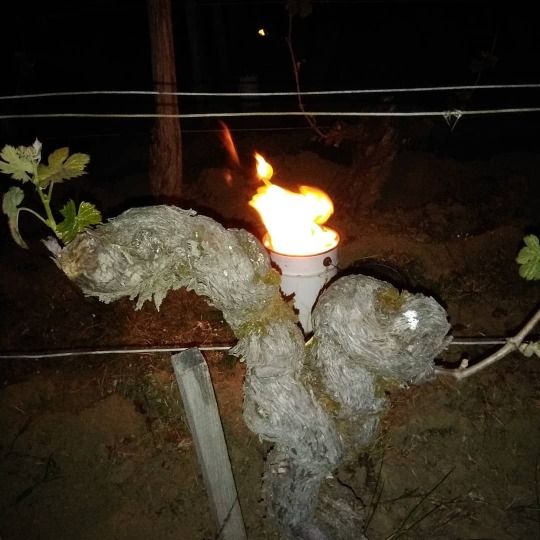
I’m not very good at lighting fires as I tend to over compensate on the fuel lighter and I feared that I would burn the whole vineyard down by trying to start a small controlled fire. I got singed here and there but nothing to complain about. Others were just marvellous in their work ethic and shared bonhomie as we tried to save our vineyard. One person on our staff did get singed with flames and in his case we rushed him to hospital with minor third degree burns. We all felt like roasted chestnuts standing between the small fires. But what a spectacular sight the landscape was with all these lighted fires. This wasn’t just our vineyard but all across the landscape of neighbouring vineyards. It looked as if the whole region was on fire. It was quite hypnotising to look at. As to its effects, it’s harder to discern. I do know that even cities of Lyon and Bordeaux had a layer of smog that was visible to others from far away.
Looking back it was both exhausting and exhilarating to experience such a time. It’s the kind of rite of passage that either breaks you or makes you. For us it certainly brought us all together more tightly than before. With our neighbours too there was a collective sense of togetherness and rather than act selfishly or just worry about our own fortunes, neighbours lent a hand towards each other in terms of equipment, expertise, or voluntary labour.
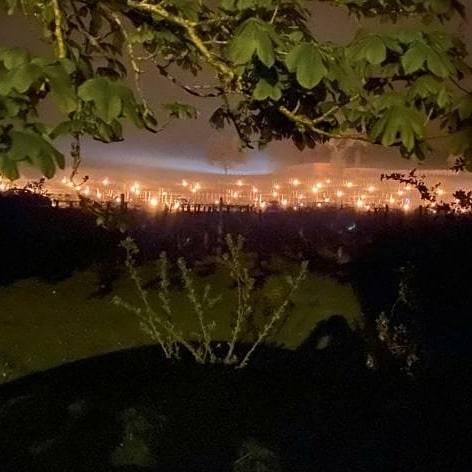
Perhaps the more wealthy chateau vineyards’ expensive techniques were able to save their best vineyards but most who could afford creating smoke blankets from burning hay bales – they were no match for the frost with temperatures down to minus 5 in some areas. Hopefully insurance had been taken out, which involves a substantial expenditure each year. We are fortunate to have insurance and the damage done to our vineyard has been mitigated to some extent. But I do know for instance that many are not insured against the effects of frost because of the cost of the coverage and many French wine producers were already struggling financially.
It was reported that many chateau vineyards in lesser known areas (Castillon, Bourg, Blaye, Côtes de Franc, Graves, Satellites of St Emilion) who could not afford these payments and who played ‘Russian roulette’, this year lost for perhaps for the last time. For them it’s personally heart breaking. For French wine making it’s a cultural tragedy. It’s hard enough for small independent vineyards (often run by families or young couples with a dream) to survive - the economies of scale as well as being aggressively overshadowed by the high volume output and superior marketing power of wealthy corporate owned vineyards - but never really expected nature, or vicissitudes of global warming, to make it that much more harder to make wine.
Unlike Bordeaux, Burgundy, the Rhone valley, in the Champagne region, we heard that not many Champagne wine producers didn’t even bother fighting the frost because they thought it would have done little good. One of the reasons why so few people engaged in frost protection in Champagne is these wine makers have as their biggest buffer against frost is their Individual Reserve (RI). In case appellation requirements are not met in the vineyard, they can draw from it.
Indeed with sales still stagnating and small yield expectations, growers may have to dip in the RI because frost season is not over till after the Saintes Glaces, a period in the middle of May after which frost generally doesn't appear. But not every vineyard can do that.

To their credit, perhaps recognising the commercial and cultural role French wine has in daily life and international prestige, the French government had agreed to step in to help. President Emmanuel Macron tweeted a picture of a candle-lit vineyard and promised that help was on the way, “À vous, agriculteurs qui, partout en France, avez lutté sans relâche, nuit après nuit, pour protéger les fruits de votre travail, je veux vous dire notre soutien plein et entier dans ce combat. Tenez bon ! Nous sommes à vos côtés et le resterons.” (“To you, farmers who, throughout France, have fought tirelessly, night after night, to protect the fruits of your labour, I want to give you our full support in this fight. Hold on tight! We are by your side and will remain so." )
To that end President Macron has declared an "agricultural disaster" and Prime Minister Jean Castex has promised that the government will provide emergency relief to those who were affected. He has also removed the limit on the amount of financial compensation that can be provided. It said it would help the smaller independent vineyards and co-operatives with tax breaks as well as pushing banks and insurance companies to help out. It’s unclear if any of this will come to pass or indeed what effect it might have in the short and long term. We shall see.
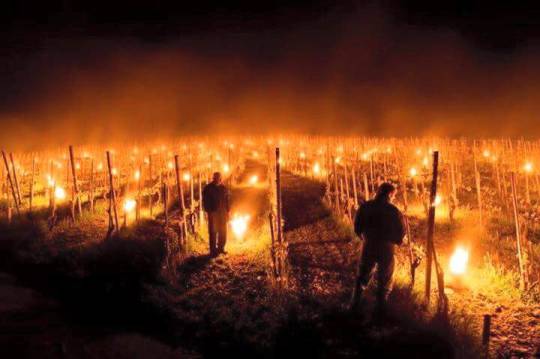
It’s been estimated that at least a third of French wine production worth nearly € 2 billion (£ 1.7 billion) in sales will be lost this year. It's another blow for France's wine industry whatever assistance is given. The French wine industry has already been dealing with the knock-on effects of the Covid pandemic, with decreases in restaurant orders due to the country's series of lockdowns. Independent producers have been hit hard by the cancellation of wine fairs due to Covid. Then there have been the effects of the tariffs that former President Donald Trump imposed as a result of assorted disputes between the administration and the European Union. In late 2019, Trump hit French wine with a retaliatory 25% import duty, a cost increase that the Economist says contributed to a 14% drop in French wine exports in 2020. Last month in March, the United States and the EU announced a four-month suspension of the tariffs.
But that doesn't necessarily help winegrowers right now - especially since a significant percentage of this year's crop may already be lost. Tradition has it that it is well into May before vine growers can sleep easy without worrying about the risk of further frost damage.
Even though we did our best to save our vines we couldn’t save all of them and even had decide which ones to forgo even trying because we lacked manpower and resources at such short notice. I heard someone amongst ourselves say losing the vines that one has cultivated so lovingly was like the loss of a family member. It may seem puerile, but that is close to what many feel. Perhaps only winegrowers can understand this sentiment, but they have found themselves out in the vines in the morning with tears in their eyes. I’m not one for sentiment and displays of emotion but even I was a little moved to see the heart break in tear filled eyes of some of the older generation who have for decades given their sweat and tears to tilling the soil. We did our best to console one another and remarkably in that crucible we experienced together we all became closer.
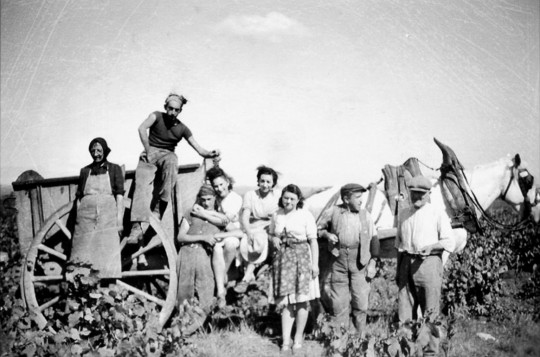
What is clear is the tradition of wine - beyond national politics and international trade disputes - is under long term threat from something much more existential. There is a saying amongst the older generation of wine makers in our fertile wine making region who say, ‘wine history is climate history’. Wine making is about the vines, the ‘terroir’ (a French way of saying the earth or the soil), but also the climate. Nature is very much the master and wine makers are but humble servants of the soil. For those who don’t believe in climate change or think it’s overly dramatised by scientists or worse, a hoax, then I would say wake up and smell the coffee. Climate change is real as any wine producer or arable farmer will tell you. Wine can make you do or say many things, but it won’t ever make you tell a wilful lie.

The French wife of my cousin, whose family the vineyard had been for several generations, told us that the wine harvest time used to span her grandfather’s birthday - September 28 - but now, the bustle of harvest is over and cleaned up in time for his birthday party - that’s two to three weeks earlier than when her grandfather used to make the wine. As she memorably put it, things are “bien cramées” (really screwed up).

All of this means that wine producers will have to change their ways as the climate changes. All the measures taken to combat frost were in reality delaying tactics to fight a losing battle with the climate. The wine industry, not just in France but around the world, needs to evolve if it is to face up to increasing climate challenges. This might include planting more weather-resistant vines that flower later, and are therefore less vulnerable to late frosts and cold snaps.
Wine, in France, is built into the fabric of the culture. The many variety of grapes across the wine growing regions indigenously grow and adapt to the precise climate conditions of the region for centuries. Winemakers know the growth stages intimately: the look of the vines before they bud; the look of the vines as they mature over long seasons; and the fat, sugary, fragrant curve of the grapes when they’re ready to be made into wine.

That harvest point is crucial. Too long on the vine and the grapes have too much sugar in them, meaning the wine will be more alcoholic—not the subtle feel most winemakers in the region care for. Too long, and the acids that give wine some of its feel in the mouth may disintegrate. Not long enough, and they might not have developed the right balance of fragrant chemicals that give the wine its characteristic flavours.
Winemakers keep careful track of harvest dates, with some regions have records stretching back to the Middle Ages. In the 1800s, scientists and historians realised that those careful records could be used to keep track of how the climate in different parts of Europe has changed over time.
Grape harvest date records are the longest records of phenology in Europe. There are hundreds of years of records of what the summer temp was like, and we can use them like a thermometer.
Grape harvest dates reflect the temperature the grapes have felt over the course of the growing season, from about April until they’re picked. If the spring and summer are hot, the grapes mature faster and need to be picked sooner. If they're cool, the opposite is true.
Climate historians started to pull together ancient information from other sources, too. They matched up the patterns in the grape harvest data with records made from tree rings and the length of glaciers in the Alps. They used records like those to figure out that much of central Europe warmed up during the Medieval Warm Period, from around 900 to 1300. It had cooled down during the Little Ice Age, from about the 15th to the 19th centuries.
The historians saw that over the past few hundred years, temperatures wobbled around, skewing warm for short stretches and cooling down in others. But overall, climate rocked up and down around a fairly consistent average value - until recently.

Wine is first and foremost an agricultural product. The grapes used to make it are grown and harvested with intent to be fermented. This means that wine production is vulnerable to the effects of climate change from the tangible health of vines to the taste and quality of the finished bottling they create. So for this reason, all winemakers see themselves as being on the front line to see what happens with the weather, with the climate. The fluctuations we have today are more significant than any time before.
If you don’t believe any of this or think wine producers are exaggerating the dangers, then taste your wine the next time you open a bottle. The chances are it has a high alcohol content. This is no accident. Because of the changes in temperature world wide, the alcohol content of wines has bumped up from about 12% in the 1970s to about 14% today. Of course that number varies from region to region and is also due to the wine maker’s preference. But a large part of it is because grapes are maturing faster in the heat. The more sugar they accumulate, the more of it is converted to alcohol during the winemaking process.
Warming has also caused the boundaries of viable growing area to swell. Typically, successful vineyards have been found between 30 and 50 degrees latitude. But as global average temperatures continue to climb, the most ideal areas to plant are moving farther from the equator. Now, areas as far up as the island of Föhr and Stargarder Land in Mecklenburg, at the tip-top of Germany, are legally permitted to produce table wines. Belgium, whose vinous history has been overshadowed by its beer culture, quadrupled production between 2006 and 2018; it’s forecasted to become a champion, alongside Finland, Sweden and other boreal climes. Shockingly, even England has also successfully entered the modern fine wine scene.

With better wine from regions we know and new wine from previously uncharted areas, it may appear the wine world is becoming better off. In truth, however, this is a thin silver lining to ever-worsening viticultural challenges.
If the growing season becomes too hot, fruit will push through its life cycle too quickly and characteristics like tannins and anthocyanins, the compounds responsible for giving grape skins their colour, won’t develop properly. Muted acid and increased alcohol levels are also possible and often undesirable.
Variations between daytime and nighttime temperatures are in jeopardy as well. In warmer growing regions, that difference can be crucial to achieving freshness and encouraging certain flavour and aroma development.
Intense heat or too much direct sunlight can lead to dried fruit notes or create flabby and dull wines. Fruit that’s left too long on the vine can be damaged from sunburn or may simply shrivel. Vines may just shut down to protect themselves.
This is already happening in some places. Wine growers in northern Italy have already seen sunburnt crops with increasing frequency. The summer of 2019 in Southern Australia was the hottest since national records began in 1910, and it ushered in an 8% loss of white wine varieties, with Chardonnay dropping 12% to its lowest yield in the past five years. Growers in Priorat, Spain, reported devastating vine damage, scorched leaves and desiccated grapes when temperatures shot up to a record 107.6˚F.
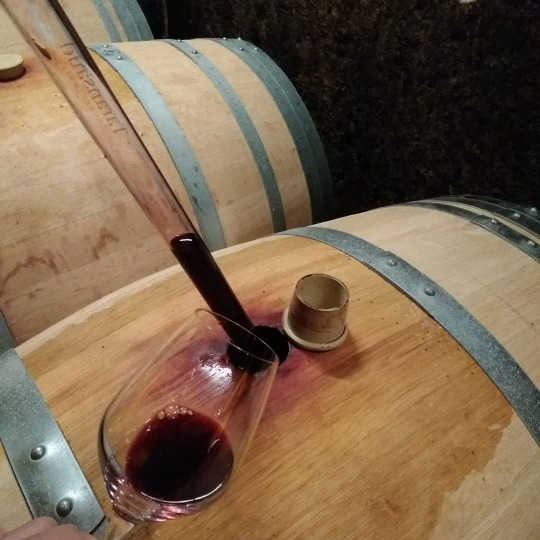
Climate change is complicated, however, and, even though temperature is the most influential factor in overall growth and productivity of wine grapes, there’s more than rising mercury to think about.
Winter, and all of its prescriptions, is one of those other things. We typically talk about warming, yet, freezes during the winter or extreme frost in the spring don’t go away. They may become less frequent, but potentially more severe. A decrease in regular winter frosts may also encourage the spread of pests and insect-borne diseases that would normally die off during cold seasons.
Moisture is pivotal. Too much rain approaching or during harvest can lead to watery grapes and a weak vintage. Similar to mild winters, damp, soggy and humid conditions open the door to a variety of pests, fungi, mildew and disease pressures.
All of these intricacies and others work in conjunction with temperature to dictate what vines can successfully grow where and for how long—and all are increasingly unpredictable or totally upended in the face of climate change.
The people who grow, make and sell wine are tuned in to these nuances.
A greater number of producers are rethinking canopy management, vine trellising or pruning techniques, developing cover crops and extensive shading methods, increasing vineyard biodiversity and finding ways to reuse water.
Still, there are some challenges that cannot be overcome.
In the future, I expect growers to struggle with maintaining varieties in certain regions without major interventions. If they don’t make major changes, wine producers will see declining yields - already seen in Europe - and declining quality as the varieties become increasingly mismatched to the climate.
Producers have begun grafting new rootstocks and experimenting with different grapes. In South Africa, Vinpro, aided tests of drought-resistant varieties including Assyrtico and Marselan, for example. Australian producers have tried Italian grapes like Fiano, Vermentino and Nero d’Avola that thrive in warmer settings.

In Old World regions, where grapes and blends may be prescribed by law, the idea of swapping plantings is monumental.
Bordeaux is one such place, and, at a 2019 General Assembly meeting, it finally relented. The Union of Bordeaux AOC and Bordeaux Supérieur winemakers unanimously approved a list of seven “varieties of interest for adapting to climate change”: Arinarnoa, Castets, Marselan, Touriga Nacional, Alvarinho, Liliorila and Petit Manseng.
The approval of these new plantings signals just how committed the region is to preserving the future of fine wine.
Each of the various tactics being implemented worldwide take lots of time, tests and research. Some experienced wine producers think it would take about 21 years to change course because of how long it takes to plant vines, grow grapes, and then create and age a wine; finding sustainable farming practices for a plot takes trial and error.
Further, the methods being devised now may not be applicable down the road. Though there are several models in use to try and predict changes, they are attempting to track a nonlinear problem that’s dependent on a range of forthcoming scenarios.
Basically, the only thing we do know for certain is that it will get warmer, and that we may be able to anticipate that heat before it hits us.We have to be asking what we can do now to preserve the integrity of the grapes and vineyards we work with and look for where our opportunities are to continue making wine. The one line that works for everyone is to cut carbon emissions, that is the emergency action that needs to be taken.

We’re all starting to see this and we’re all affected. We know we can’t turn it backwards, and we’re not even sure we can slow it down. But we have to try.
Think on all this the next time you take a sip of wine.
#wine#vineyard#frost#climate change#environment#economic disaster#harvest#france#bordeaux#bourgogne#champagne#weather#wine business#personal#personal pics#family
36 notes
·
View notes
Text
Offshore Recruitment agencies make the work go smooth for the offshore industries
Working on oil rigs in the sea is typical of offshore work. Offshore employees in the oil and gas industry are typically involved in discovering and recovering mineral resources from the seabed. It is possible that the task will be physically taxing and that it will be done under harsh conditions, such as extreme weather. The offshore service and maritime sectors are important economic engines that ensure that our country has enough energy and resources to develop. These industries are made up of a wide fleet of technologically advanced boats that keep the energy industry's heart pumping. The last few years it has been difficult and challenging for the offshore industry due to several factors. There has been a great change in the offshore industry before the Covid-19 times and today. The shortage of manpower has greatly affected the offshore industry. The offshore recruitment agency gives big support to the offshore industries by providing efficient manpower.
There might be many recruitment agencies that would be providing manpower to the offshore industries. The recruitment agencies guide the candidates about the career opportunities that are available in the offshore industry. The offshore industries are vastly increasing day by day with lots of career opportunities and vacancies.
Ajeets is among the top offshore recruitment agency for the last 16 years serving skilled manpower across the globe. Ajeets has always provided skilled labor in abundance whenever it has been required to offshore industries situated globally. Our team of experts guides the interested candidates about the career opportunities in this industry. We recruit for the offshore oil and gas industry and marine offshore industry. The offshore and marine recruitment procedure is a bit difficult nowadays, and it is not a part of mainstream recruitment. However, there are many roles in marine and offshore drilling that candidates are interested in. The money is good, and the positions available in this industry are fascinating. There are many job opportunities on drillships, jack-up rigs, semi-submersible drilling rigs, undersea oil and gas mines, and so on. Most of the time, positions in marine, rigging, drilling, and maintenance are offered on a temporary, permanent, or contractual basis.
AJEETS works with the reputed companies globally that are having best career opportunities. From chief engineers to pipefitters, we hire for a variety of professions like Chief Engineer, Coil Tubing Engineer, Mud Logging Engineer, Drilling Fluids Engineer, Noise and Vibration Control Engineer, Drilling Superintendent, Surveyor, Radio Officer, Security, Paramedic/ Nurse, Safety and Fire Protection Staff, Crane Operator, Drilling Foreman, Chief Mate, Slickline Jobs, Drillers, Rig Electrician, Rig Welder, Rig Mover, Seaman, Oiler, Boat Driver, Derrick Man, Store man, etc. Because these professions require a lot of travel and relocation, we look for applicants who are adaptable to the settings and job requirements of the places they are assigned to. Candidates must pass examinations that have been properly created by our recruitment specialists. Our candidates receive feedback and guidance in order to help them enhance their performance. Our recruitment process also includes basic training. Our documentation procedure is simple and straightforward. Our recruitment team strategizes tailored personnel solutions for your business growth based on your project requirements. Our services also meet market and industrial requirements.
AJEETS provides an abundance of skilled labor to offshore countries. As the premier offshore recruitment agency, AJEETS saves you time, effort, and resources in hiring, training, scheduling, and managing employees. Instead, we'll take care of all the paperwork and processes while you focus on getting more work done. We make sure that the candidate we recruit for your company is that much capable of working and helping your company to become more successful. We have been an experienced staffing agency as we are in this business for several years. Before locating a candidate for the company we make sure that his salary must be negotiated and be made fixed, his documentation, visa processing everything should be well marked. As the leading offshore recruitment agency, we provide human resources from India, Nepal, Bangladesh, Sri Lanka, and the Philippines. Kenya, and Uganda. AJEETS team has recruited skilled, semi-skilled, and unskilled manpower to countries like Qatar, the United Arab Emirates, Kuwait, Saudi Arabia, Bahrain, and Oman in the Middle East; Singapore, Brunei, Malaysia, the Maldives, and China in the Far East; and the United Kingdom, Germany, Poland, Romania, and Serbia in Europe.
#employment#Manpower#Jobs#recruitment#recruiting#newjob#top#best#hiring#Current#services#agency#consultancy
0 notes